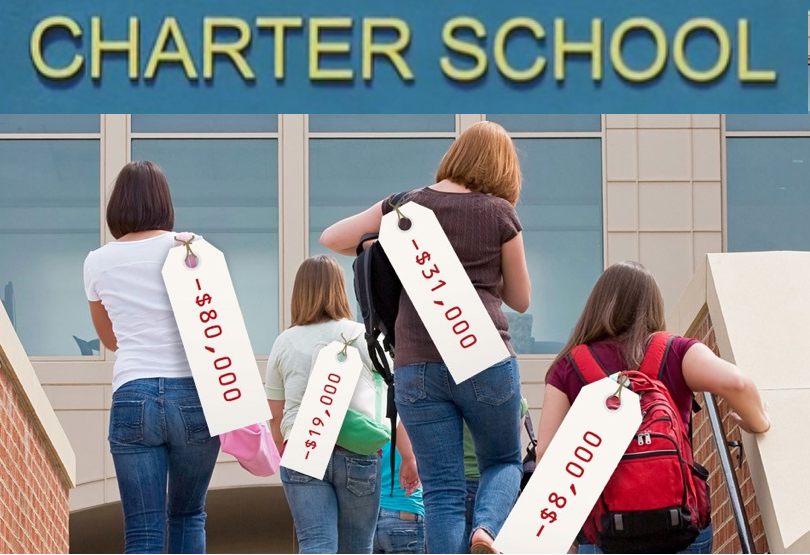
Paolo invited me to his desk yesterday.
“Mr. Singer, take a look at this,” he said and handed me a scrap of paper with a few hastily scribbled lines of poetry on it.
“What do you think?” he said and smiled up at me hopefully.
I squinted at the page and said slowly, “I think it’s wonderful. The use of assonance in these lines is perfect…”
And his smile matured into a grin, until…
“…if only Edgar Allan Poe hadn’t already written them.”
Cheating is a part of school.
It’s probably always been.
Students copy off of other students, they take quotes from books without giving the author credit, they make crib sheets to consult during the test.
But since technology has pervaded nearly every aspect of our classrooms, cheating has skyrocketed.
Just ask the students.
According to a survey of 70,000 high school students conducted between 2002 and 2015 across the United States, 95 percent admitted to cheating in one way or another, and 58 percent admitted to plagiarizing papers outright.
According to a 2012 Josephson Institute’s Center for Youth Ethics report, nearly 3/4 of high schoolers said they’d copied a friends’ homework, and more than half said they’d cheated on a test.
It’s hard to blame them. These days there are few things cheaper than information.
Nearly every student – no matter how impoverished – has a smartphone. And even if they don’t, districts supply them with virtually the same features in tablets or laptops. Like never before, students can connect to the Internet anywhere, anytime, and they don’t even have to type in a question – they can simply ask Alexa or Siri.
I can’t tell you how many times I’ve seen children sit in front of shelves stuffed to bursting with dictionaries as they clandestinely whisper into their phones asking how to spell certain words.
Mountains of studies show that technology has made cheating in school easier, increasingly convenient, and more difficult to detect. So much so that many students don’t even consider digital plagiarism to be plagiarism.
Current generations practically were raised on social media and thus have a warped sense of intellectual property. Watching TikTok parody videos, reposting images on Instagram, and repurposing memes on Facebook or Twitter have eroded their sense of what constitutes intellectual property and what counts as original work.
Going back to Paolo, I don’t think he consciously tried to pass off Poe’s poetry as his own. He was trying to complete an assignment using assonance (repetition of vowel sounds in nearby words) in a poem.
He probably asked his district-issued iPad for examples and was directed to a snippet from Poe’s “The Bells.” So he copied it down, changing a word here and there and thought he had created something new.
It wasn’t word-for-word. It was just very close. He didn’t realize that such an exact approximation of an iconic verse would be so obvious.
And it was my understanding – knowing the student, judging his reaction to being caught, and being able to piece together how this act of plagiarism took place – that informed my reaction.
I explained to him that he needed to go further a field – to create his own lines that might be inspired but more distinct from Poe’s. And he did.
This wasn’t the end product; it was a bump in the road.
However, not all cheating is so forgivable.
There are many cases where students know exactly what they’re doing and simply don’t care or feel the risk is worth the reward.
A study from 2021 published in the International Journal for Educational Integrity concluded that students’ emotions and attitudes toward assignments have a lot to do with whether they engage in purposeful cheating.
Students who feel sad, distressed or other negative emotions tend to be more open to plagiarism than those who feel more positive. In fact, one can use student’s negative emotions to predict the chances that they’ll cheat on assignments, according to this research.
The fact that so many aspects of modern day curriculum focus on standardized testing and teaching to the test also factors into the equation.
Students have admitted that drill-and-kill assignments, testing look-a-likes, etc. are seen as worthless and thus they are more prone to cheating on them.
Students will perpetrate fraud even on assignments that they see as valuable, but they are much more likely to do so on standardized curriculum – the kind policymakers and many administrators are increasingly pressuring districts and teachers to include in the classroom.
Educators are under incredible pressure to include the most boring and useless of skills in their lessons – not how to think critically, read thoughtfully or write expressively, but how to take this or that assessment. Then when students rebel by cheating, teachers are admonished to detect it at every corner but not to punish students too severely.
Thus we create an infinite loop of academic dishonesty. And no matter what happens, it’s the teacher’s fault.
The way I look at it, teachers should take steps to stop cheating in the classroom, but without administrative support, they can only go so far. If there aren’t academic consequences for cheating, administrators have tacitly accepted the behavior regardless of what teachers do in the classroom. If there are no consequence – no adequate disincentive – cheating is normalized regardless of the words written in the student handbook.
I’m not saying there shouldn’t be grace and understanding, but there need to be consequences, too. Students feel more free to be authentic and original when they are immersed in a school culture where authenticity is valued over fraud.
After all, even in circumstances where teachers have full support, they can’t catch everything. And I think that’s okay.
Who is most harmed when students cheat? It is not a victimless crime. When students engage in such behavior, they aren’t really hurting anyone other than themselves.
Think about it.
You’re a student in school ostensibly here to learn. If you cheat on an assignment (a valuable assignment) you’re just stopping yourself from achieving the intended learning.
You’re limiting your own knowledge, your own skills and abilities. Instead of grasping how to write and read critically, for instance, you get the grade without the learning.
It would be like going to the doctor and presenting fake bloodwork. That’s not going to harm the physician – it’s going to hurt the patient.
It’s the same for accidental and purposeful cheating.
So what can we do about it?
1) Perhaps the most important thing to discourage the unintentional variety is to teach kids what it is – especially with relation to technology.
Districts have to shift from embracing any technology as a given to being technologically literate. EdTech is like the Internet – a sewer. There’s way more garbage in there than treasure. If the district can’t control its own technosphere, it’s best not to have one at all. Be purposeful about the kinds of hardware and software you allow, and actively teach students how to use it.
A 15-minute crash course once every four to eight years is not enough. At minimum computer etiquette and digital proficiency should be an annual semester course, because students who cannot navigate the new media will be forever slaves to it.
However, that’s only half of the solution.
2) The best way to discourage purposeful cheating is to present students with meaningful work.
If kids actually want to learn what you’re teaching, they’ll be less inclined to fake their way through it.
Of course, this can only be truly effective when educators are allowed a voice in their own curriculum, their expertise is valued, and they are free to determine how best to go about their jobs. But let’s be honest – that’s not going to happen anytime soon.
3) Focus on process more than product.
For example, when my students write an essay, I never give them the prompt and then wait to see the results. We do prewriting together that needs to be approved before they can even begin their first drafts. We discuss it every step of the way until they submit it for a grade – and if it still has issues, I simply don’t accept it. I hand it back with suggestions for changes again and again until it meets the agreed upon standard.
That makes cheating much harder to do. It also puts learning – the journey from point A to B – at the forefront rather than coming up with something arbitrary.
4) Finally, relationships are the bedrock of responsibility.
Nothing in my class is high stakes.
If a student messes up today, there’s always tomorrow. All assignments are accepted late up to a point. All tests can be retaken. Everyone gets another chance to succeed.
It’s a huge burden on me, the teacher, but I think it’s worth it to extend a little grace to students. It’s worth it demonstrating that I value them over their work.
In teaching, relationships are everything, and you’re less likely to get purposeful cheating from students who respect you and whom you respect.
I’m not saying this is perfect or that I have all the answers. But in an age where everyone seems worried about academic integrity without any concern for academic freedom, it’s important to put your priorities front and center.
Cheating may never go away entirely, but at least we can be honest about why it happens and who it hurts.
Like this post? You might want to consider becoming a Patreon subscriber. This helps me continue to keep the blog going and get on with this difficult and challenging work.
Plus you get subscriber only extras!
Just CLICK HERE.

I’ve also written a book, “Gadfly on the Wall: A Public School Teacher Speaks Out on Racism and Reform,” now available from Garn Press. Ten percent of the proceeds go to the Badass Teachers Association. Check it out!







